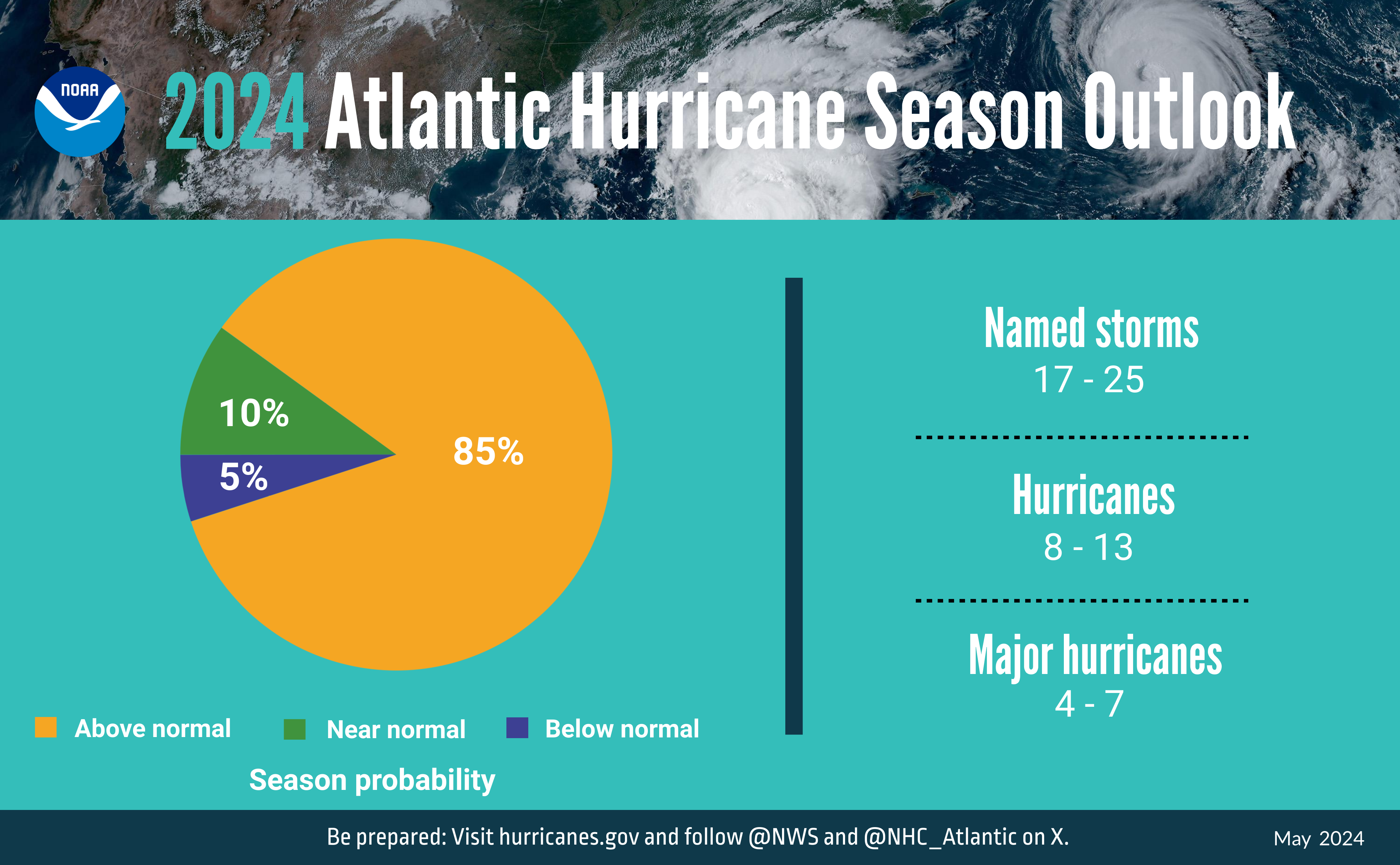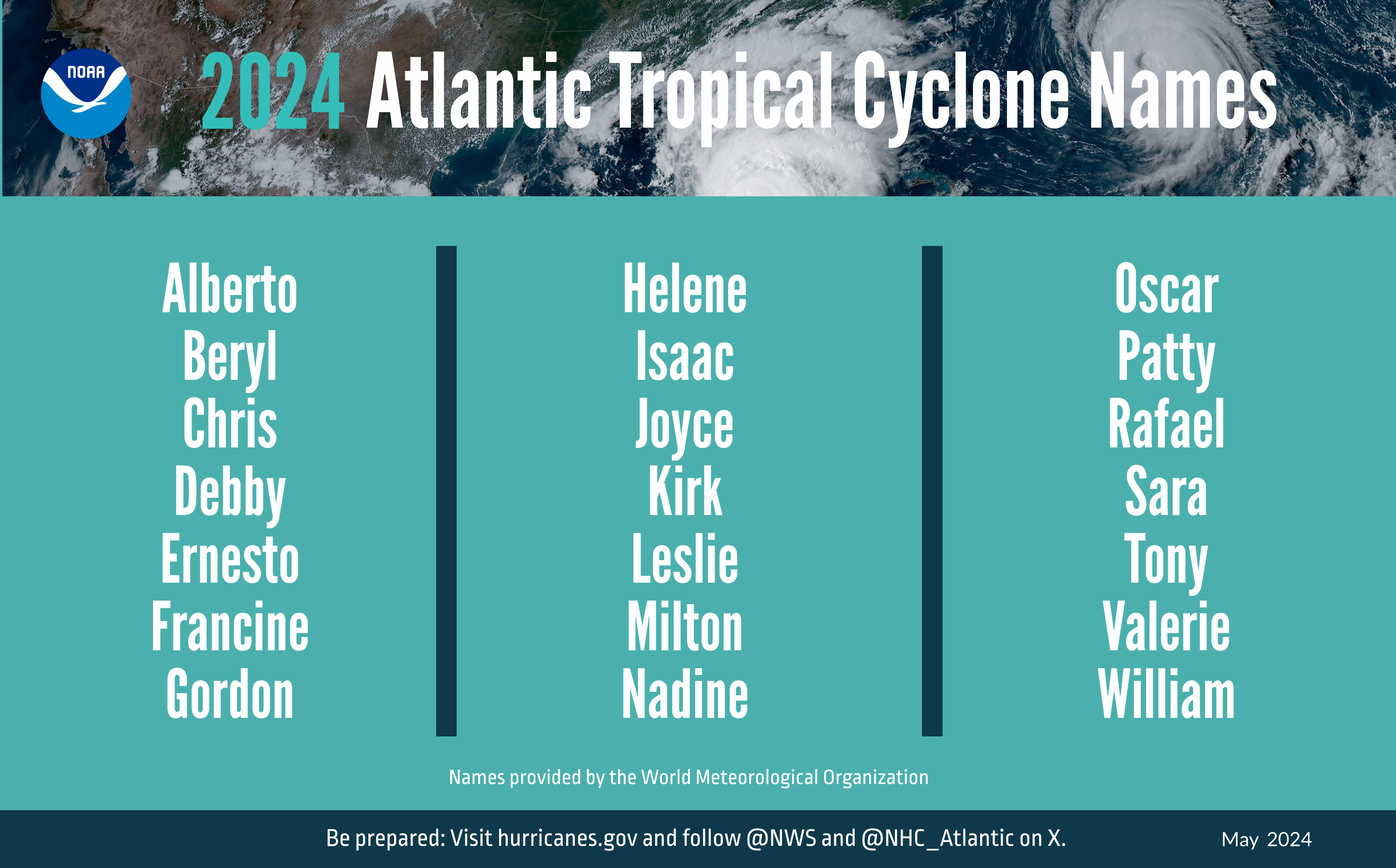Though summer doesn’t technically begin until later this month, hurricane season officially started Saturday.
The National Oceanic and Atmospheric Administration predicts an “above-normal” hurricane season this year.
One small storm can wreak havoc with your vacation plans, so let’s talk about when hurricanes can get in your way and how to protect your scheduled trips.
Hurricane season outlook for 2024
Forecasters at NOAA’s Climate Prediction Center have predicted an 85% chance of an above-normal hurricane season across the Atlantic Ocean, with a 10% chance of an above-normal season and a 5% chance of a below-normal season. The 2024 predictions are far less optimistic than in 2023, when the same scientists called for a 40% chance of a near-normal hurricane season across the Atlantic Ocean.
In 2023, NOAA reported 17 named tropical storms and 18 hurricanes across the Atlantic, Eastern Pacific and Central Pacific oceans.
This year’s tropical activity report is largely due to La Nina and warmer-than-average ocean temperatures.
In their report, meteorologists said they expect anywhere from 17 to 25 total named storms, up from 12 to 17 total named storms. A storm must exhibit winds of 39 miles per hour or higher to be worthy of a name. Of that batch of storms, eight to 13 could become hurricanes with 74 miles per hour or higher winds; this includes four to seven major storms that could grow into major Category 3, 4 or 5 hurricanes, with winds of 111 miles per hour or more.
NOAA pegged its predictions with a 70% confidence rate, which is the same rate as last year.
“The upcoming Atlantic hurricane season is expected to have above-normal activity due to a confluence of factors, including near-record warm ocean temperatures in the Atlantic Ocean, development of La Nina conditions in the Pacific, reduced Atlantic trade winds and less wind shear, all of which tend to favor tropical storm formation,” NOAA said in its release.

Daily Newsletter
Reward your inbox with the TPG Daily newsletter
Join over 700,000 readers for breaking news, in-depth guides and exclusive deals from TPG’s experts
When is hurricane season?
Atlantic hurricane season starts June 1 and ends Nov. 30, though hurricanes can happen outside those dates.
Hurricanes can also happen in the Pacific Ocean, and Eastern Pacific hurricane season spans from May 15 through Nov. 30. Storms in this region affect travel to the Mexican Riviera, such as Los Cabos, Mazatlan, Puerto Vallarta, Acapulco and Ixtapa.
Hurricanes can also hit Hawaii, typically between June and the end of November, with storms most likely occurring between July and September.
Storms known as cyclones also occur in the Southern Hemisphere. Peak cyclone season for Australia and New Zealand is March and April.
Is my vacation destination safe from a hurricane?
Atlantic hurricanes usually start in the Caribbean, power through the Bahamas and then hit states in the U.S., including Florida, Louisiana, Alabama and Texas.
Hurricanes have affected northern destinations such as North Carolina, New York, New Jersey and even Canada.
Hurricanes are normally stronger in the Eastern Caribbean. The peak hurricane season for this area is mid-August through September, while the Western Caribbean tends to see more storms from mid-September through early November.
Cruise itineraries can be affected by hurricane season, too.
Hurricane lingo
Monitor the weather if you have vacation plans in the hurricane zone during hurricane season.
As you watch the weather forecasts, parse the information through these lenses:
- Tropical depression: A weather event with a sustained surface wind speed of 38 miles per hour or less
- Tropical storm: A storm with winds ranging between 39 and 73 miles per hour
- Hurricane: A storm with 74 miles per hour or more sustained surface winds
- Hurricane watch: Sustained winds of 64 knots (74 miles per hour) or higher possible within the specified area
- Hurricane warning: Sustained winds of 64 knots (74 miles per hour) or higher expected within the specified area
- Major hurricane: A hurricane classified as a Category 3 or higher
For more, see the National Hurricane Center’s glossary of hurricane-related terms.
Trip insurance
If you book travel to a destination during its hurricane season, consider your protection options. You can pay for third-party travel insurance, rely on credit card protection or self-insure if you decide that the cost of the trip is low enough to lose what you paid.
Remember that most travel insurance policies don’t cover trip cancellation if you preemptively cancel your trip because the weather forecast looks dismal. In most cases, the storm would need to be named, and you would’ve had to purchase your insurance before the storm got to named status.
If you’re worried about bad weather ruining your trip, buy the cancel-for-any-reason add-on for your insurance policy. While this can be expensive, it might be right for your situation. You can compare trip insurance prices with and without the add-on at portals such as InsureMyTrip and SquareMouth.
Bottom line
“As one of the strongest El Ninos ever observed nears its end, NOAA scientists predict a quick transition to La Nina conditions, which are conducive to Atlantic hurricane activity because La Nina tends to lessen wind shear in the tropics,” per the NOAA. “At the same time, abundant oceanic heat content in the tropical Atlantic Ocean and Caribbean Sea creates more energy to fuel storm development.”
This means we expect the upcoming Atlantic hurricane season to be more active than in recent years.
“Human-caused climate change is warming our ocean globally and in the Atlantic basin, and melting ice on land, leading to sea level rise, which increases the risk of storm surge,” according to the NOAA. “Sea level rise represents a clear human influence on the damage potential from a given hurricane.”
The NOAA will update its 2024 outlook in August when hurricane season peaks.
Related reading:


